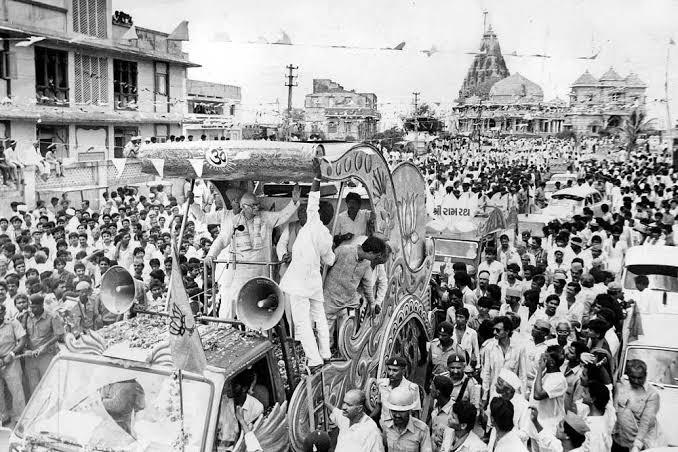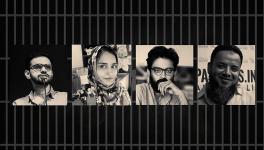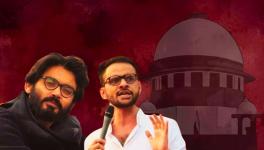Alchemy in ‘New India’: How Faith Becomes Law

Alchemy was a popular practice in the Middle Ages in which people tried to convert base metals, like copper, into gold or silver. It was a kind of proto-chemistry, a precursor to science. In the ‘New India’ that Prime Minister Narendra Modi and his government is claiming to build, this practice has been revived – faith is being converted to reality using various means, including law. The Supreme Court judgement on the disputed area in Ayodhya, which was claimed by Hindu and Muslim litigants, appears to be falling in line with this trend.
The judgement does ‘settle’ the dispute, since both sides had vowed that they would accept judicial resolution. The disputed area – some 2.77 acres – has been handed over to a trust for building a temple. The government has been told to give Muslim parties a separate 5-acre piece of land for constructing a mosque, in lieu of the original mosque that was destroyed by Hindu fanatics in 1992. That mosque had stood over the disputed area.
On the face of it, there appears to be nothing else that could have been done. Both sides are fatigued. The Muslim community – in ‘New India’ – is already sullenly resigned because of continuous acts of terrorising by Hindu fanatics, emboldened by a government that closes its eyes on lynchings and mob violence.
The only Muslim majority state in the country – Jammu and Kashmir – is under lockdown after its special constitutional status was revoked by the Narendra Modi-led Bharatiya Janata Party government in August this year. Most political parties, except the Left, are more or less aligned or silent about this marginalisation of the minority community, or for that matter, about the rise of Hindu nationalism.
But, a closer reading of the apex court’s judgement shows that it has opened the backdoor for portentous possibilities. The chief danger is this: once, a widespread belief or faith is accepted as a juridical principle for deciding upon matters of dispute, all kinds of possibilities open up.
How Faith Gets Woven Into Litigation
The Supreme Court, in its order, repeatedly says that it is addressing the dispute as a title suit. That means it is looking at ownership of land under dispute – who owns the land? It asserts that it is not going to be driven by what people believe. So far so good.
But then, after sifting through voluminous documentation that has accumulated over centuries since the mosque was built in 1528, it comes to a strange conclusion. This is the crucial leap of faith.
In para 788.XVII, the Court summarises all the evidence and its analysis to conclude that the Muslim parties could not prove “dedication by user” of the disputed land and neither could they prove “adverse possession”. The latter term means that somebody else took over possession although the original title belonged to them. The Court also says that while the outer courtyard has been proved to have been used “unimpeded” by Hindus for worship, the “inner courtyard” [or sanctum sanctorum] is contested with both parties claiming use.
Then, in Para 798, the Court asserts:
As regards the inner courtyard, there is evidence on a preponderance of probabilities to establish worship by the Hindus prior to the annexation of Oudh by the British in 1857. The Muslims have offered no evidence to indicate that they were in exclusive possession of the inner structure prior to 1857 since the date of the construction in the sixteenth century.
How has the Court deduced that Hindus worshipped at the site prior to 1857? It has deduced this from what it calls “circumspect” sifting of evidence from Gazeteers and travelogues, as summarised in sub-para IV of Para 798. On the other side, the Court found that the Muslim side could not show any evidence that the mosque was being used for offering namaz prior to 1856-57.
On this ground, the Court has built the whole super-structure. It is couched in cautionary language. Indeed, such is the caution, that ultimately it also decides to give a compensatory plot of land to the Muslim side.
Obviously, the logic is not impeccable nor is it waterproof. It is more of a leap of faith – Hindus have believed the site to be the birthplace of Shri Ram and offered prayers at the site continuously whereas the Muslims have offered prayers only for the past 160-odd years. The strength of Hindu faith is pointed out – that despite an Islamic structure standing on the very place, Hindus continued to offer prayers for centuries.
With this, the Supreme Court turns the whole issue around and hands over the disputed land to Hindu parties, although through a trust to be set up by the Modi government.
To be fair, the Court has also made strong comments at the “egregious” violation of rule of law when Hindu fanatics demolished the mosque. It has also criticised the “desecration” of the mosque earlier in 1949 during communal riots following the secretive placing of idols in the mosque by Hindu activists. It has also asserted the supremacy of the law that prevents conversion of a place of worship (as it existed on August 15, 1947) to another religion’s place of worship. But all this is topped off by settling the dispute on the basis of the faith of Hindus, which led them to worship at the site for so many years.
How a ‘Movement’ Was Created
It should be kept in mind that the worship of Shri Ram is common in Northern India and Ayodhya is a major pilgrimage town. But the movement to establish the temple at the exact spot where a mosque stood was never a movement – it was just a belief which didn’t really matter to common people. Their piety was larger than the disputed 2.77 acres. It was the Sangh Parivar, especially the Vishwa Hindu Parishad and BJP, which turned it into a political weapon since the 1980s.
Remember that after adopting the demand for building a temple at the disputed spot in its National Executive meeting at Palampur in 1989, the BJP launched an incendiary movement with the Ram Shila Poojan in 1989, followed by communal riots across several states; the highly provocative Rath Yatra of L.K. Advani in 1990. Then came the horrendous communal violence after the destruction of the mosque in 1992, when riots engulfed the country with at least 227 killed in December and 557 killed in January, and then 317 lives lost in March after the Bombay bomb blasts, according to reports.
The BJP, of course, gained electorally, increasing its vote share from 11.9% in 1989 to 19% in 1991, even though Congress won the election after Rajiv Gandhi’s assassination. Since then, BJP has campaigned on the issue constantly, especially during elections.
In sum, the prevalence of belief can – and was – created, as was its aggressive form. It was weaponised for electoral gain, but also for larger ideological dominance. In the coming days, faith-based ‘realities’ are bound to get incarnated more commonly. The apex court has opened the door for that. Now it is up to the people to guard their unity, and secularism.
Get the latest reports & analysis with people's perspective on Protests, movements & deep analytical videos, discussions of the current affairs in your Telegram app. Subscribe to NewsClick's Telegram channel & get Real-Time updates on stories, as they get published on our website.
























